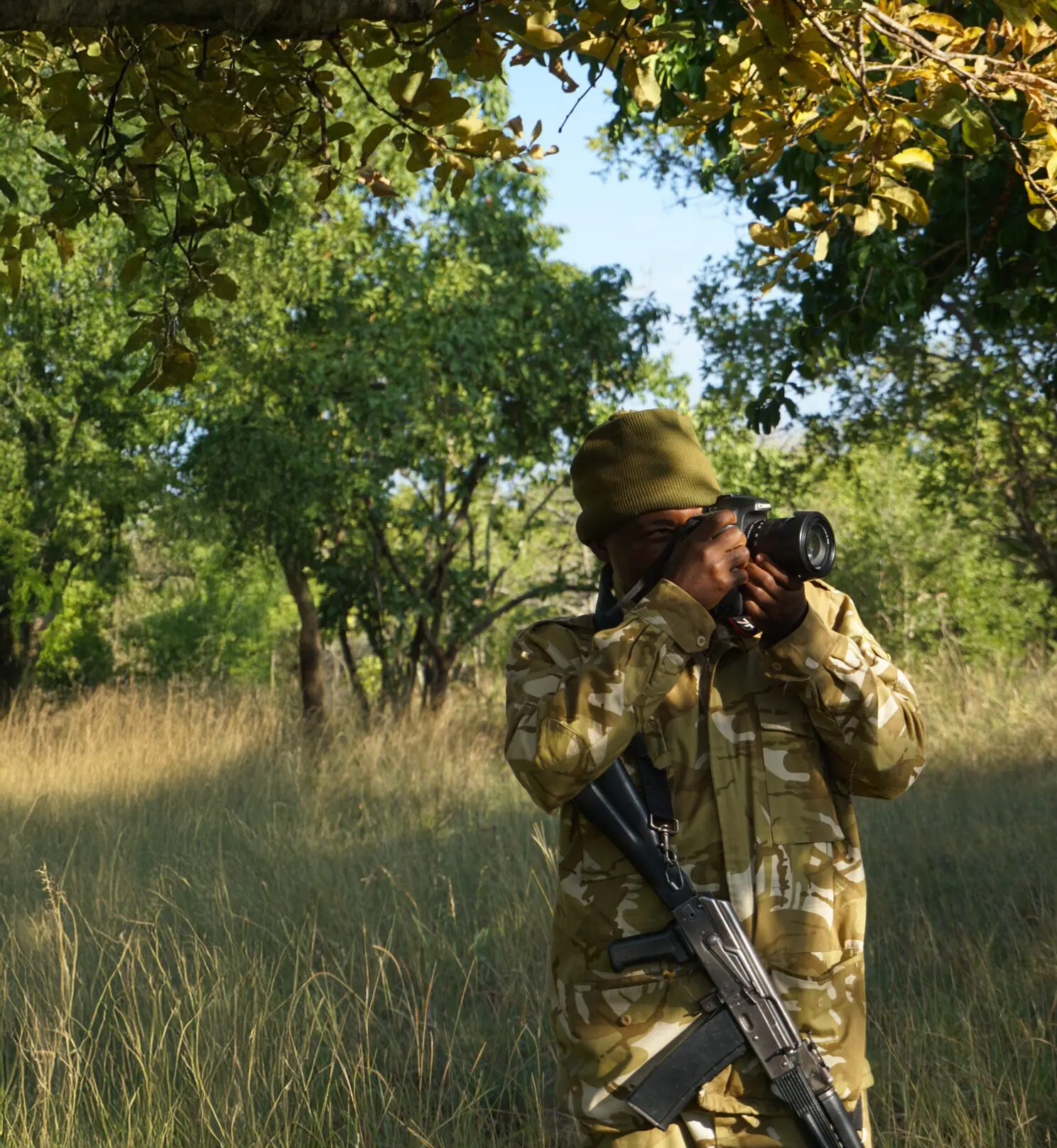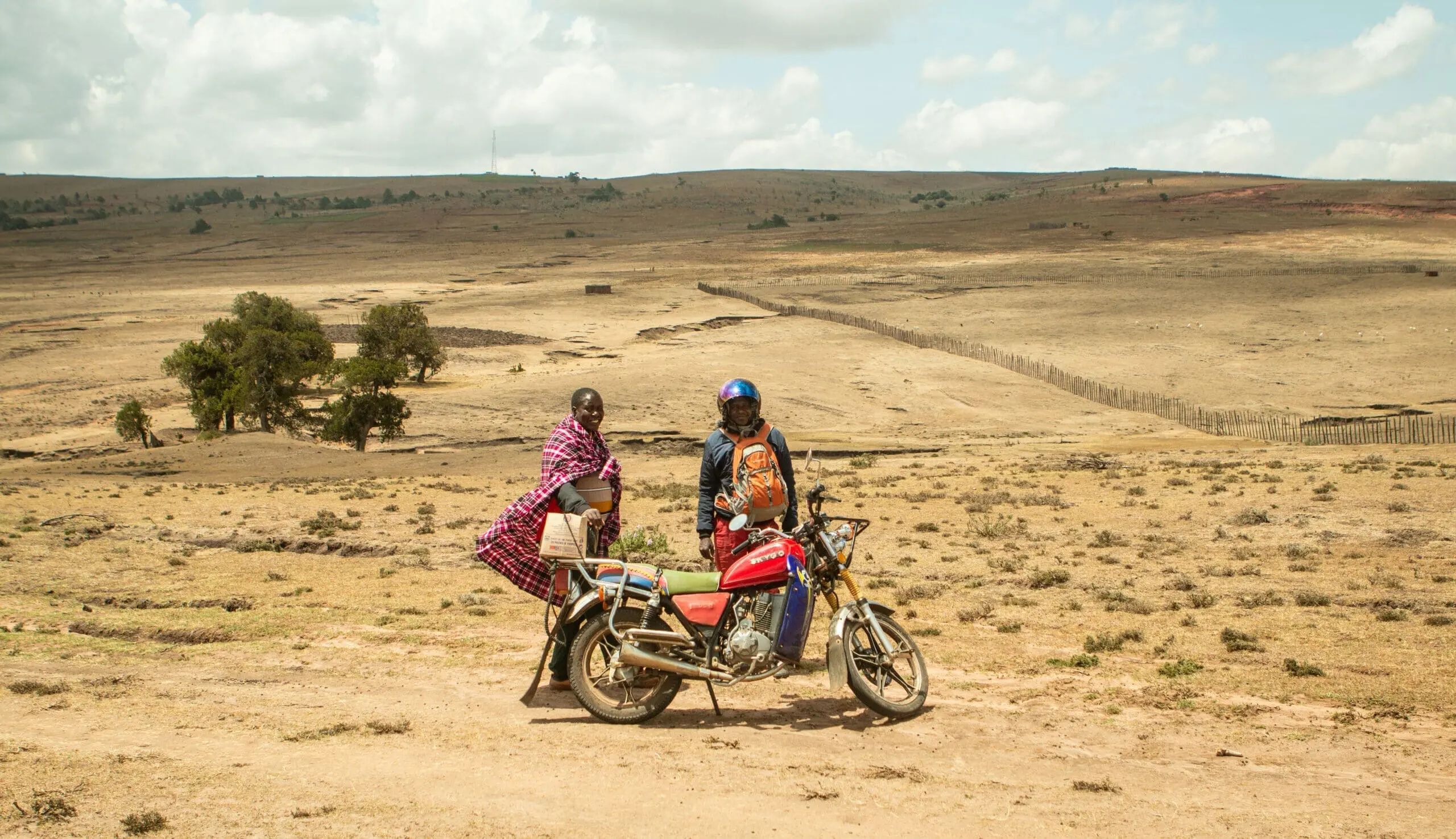Quiver tree – Aloe Dichotoma
We start with
Namibia's national plant. The San people ingeniously used these trees as refrigerators by hollowing them out since they remain wonderfully cool. The Quiver Tree isn't particularly remarkable to me. I once walked three kilometers too far into the desert with Menno because we mistook the Quiver Tree for a shrub. It's often not very imposing, but it's historically significant. Its inclusion in this list is well-deserved, if only because it's one of the very few trees that can endure in the Namibian desert. It has a golden bark with a bit of a root, typically about a meter or two, but often smaller.
Sycamore Fig – Ficus Sycomurus
The Sycamore tree has an impressive résumé. These grand, sturdy trees are mentioned in the Bible as a tree, and their fruit, the fig, is a fruit mentioned in both the Old Testament and the Quran. The wood is highly prized, and even the figs and twigs of this tree have been found in Egyptian tombs. The fig tree, it seems, has quite an allure for humans. In
Kenya, the tree is known as the Mugumo among the
Masai and Kikuyu tribes. When this tree falls, it is believed to foretell disaster. It's still reported in the news when a Mugumo tree falls, and sometimes the tree seems to miraculously stand upright again.
The Sycamore fig is also referred to as the "
tree of life," as it was known in Mesopotamia as a majestic tree. Additionally, the Bodhi tree, under which Buddha achieved enlightenment, is also a type of fig tree, the Indian cousin of the Sycamore, the Religiosa. These are quite fitting names for a tree.
Apart from all these human-created myths around this tree, it is also home to the wasp, which lays its eggs in the tree. Monkeys, beavers, and squirrels are also fond of these dark green forest dwellers with their dense foliage. You can find this beautiful tree in many parts of central Kenya and in various other regions of East Africa with a subtropical climate.
Giant Lobelia – Lobelia
About 400 kilometers southeast of Addis Ababa in Ethiopia, you'll find the Giant Lobelia. And not just one, there's a whole forest of them on the 4,000-meter-high Sanettie Plateau in the Bale Mountains. While the Lobelia is usually a cute little succulent, occasionally with pretty blue flowers, in Morocco, these Lobelias are trees, standing about 1.5 meters tall. They are so-called Afro-Alpine trees, thriving at high altitudes on rocky moorlands. These Ethiopian Lobelias are impressive, unique, and somewhat reminiscent of the sansevieria (snake plant) you might have had in your student days, which they are indeed related to. Harsh weather conditions and limited water don't bother these guys; they grow like crazy in Bale. On Kilimanjaro, you'll find their brother, Lobelia deckenii, another oddball but much smaller.

Bougainvillea – Nyctaginaceae
The beauty of a Bougainvillea is overwhelming. Its purplish, yellow, or red flowers are often the pride and joy of every homeowner who has one in their yard, whether they're Indonesian, Mexican, or South African. It's a fairytale-like tree that actually hails from Brazil and was only introduced to the Mediterranean region in the 19th century. In Africa, it's a relatively small tree; a large one might reach 4 meters in height, which is the absolute maximum. The French subsequently cultivated these shrubs in Asia, and the tree became an eye-catching feature in colonial gardens in India or Kenya. Nowadays, these trees are well-represented throughout the entire subtropical world. However, that certainly doesn't make them any less beautiful.
The Madagascar pied Almond tree – Terminalia Mantaly
A typical Malagasy almost extraterrestrial case. With leaves that resemble a tamarind tree and therefore let through a fabulous greenish light. This almond tree with its soft branches resembles a friendly Christmas tree, only it is a bit longer and above all wider; it can have a diameter of 9 meters. The Terminalia Mantaly is not very special to us anymore; although this tree was endemic to Madagascar, it has been massively exported and now grows in the forests of Zeist, in the gardens of Kenya and even in Copenhagen is a proud specimen. A tree that feels at ease everywhere, especially when you consider that it has only been found outside Madagascar since the eighties. So why in this list; just because you can linger under such a tree in a big, safe green world. So come to Madagascar or if you want to chill green today; go to Zeist.
Muna tree- Mufia Ligno
The muna tree is one of the tallest indigenous trees in Kenya and there are specimens known – in Limuru – to be over 800 years old. The tree is impressive because of its height and the trunk is often split, so you can walk under it very often. Many Muna trees can be found in the tea fields because it is often a little cooler and damper here than elsewhere. You see them a lot in Kiambu and Muranga. The wet wood of the Muna did not make it nice to use and so they were not cut down as fast as many other trees. In addition, because of their enormous height, the trees often served as a landmark in the landscape. People could meet there before we could share our Whatsapp location. You can find the Muna tree in the highland forests of
Mt. Kenya, the Aberdares, Mau Summit and north of the Cherangani Hills. The Muna tree is unfortunately threatened with extinction probably also because her seeds only germinate in a soft and humid environment. This longest tree of the African mainland is picky, unfortunately.
Jacaranda
A fairytale tree that grows in the tropics and subtropics. The Jacaranda is a medium-sized tree that blossoms at the end of the summer and colours a city like
Nairobi light purple. It is said that the blossoming of the tree heralds the beginning of the rain. And this year it did. The Jacaranda is not a native African tree. It’s also called Rosewood Tree and actually comes from South America. A certain Baron Ludwig planted the tree in 1828 in Pretoria and, and the rather invasive nature of this purple beauty has earned Pretoria the nickname "Jacaranda City." As a result, the tree is widespread in almost all of southern Africa. It grows to about 20 meters in height.

Mangrove tree- Uca Ligno
The world-saving tree: the Mangrove tree absorbs the most CO2 per square meter of any tree in the world. They grow on tropical coastlines and are more like large shrubs that form a collective organism. We support a Mangrove project in Diani to reduce our carbon footprint, and every Charlie's Travels traveler contributes to this project, as it is included in the price. Learn more about it
here.
Mangrove trees are not only good for the air; in the swamps where they grow, many birds and fish thrive, which usually brings joy to the local population. It is a tree that easily establishes itself in saltwater, and despite its many benefits, it is still under threat. It is often felled, and the pollution of seawater sometimes causes these forests to perish. It's a sad situation. So come visit
Diani; kayak through the Mangrove forest and get involved in preserving this fantastic and diverse tree.
Acacia tree- Robinia Pseudoacacia
No tree characterizes the African landscape like the archetypal Acacia tree. If you don't have that one tree on the horizon in front of the golden sunset on your Instagram, it's not very believable that you've actually been to Africa. Acacias have leaves that are composed of smaller leaflets, and many species have thorns. They bloom, and their flowers are often yellow or white. There are around 1300 (!) different species of acacias worldwide. They have rough, hard, almost black bark and are difficult to work with. That's why there are still so many of them; the wood is not suitable for craftsmanship. Acacias have a distinctive mushroom-like shape and can grow to be about 8 meters tall. In some Acacias in West Africa, you can find dimethyltryptamine, indeed, DMT. That substance that makes you trip when consumed and is also produced by your brain when you die. You can find Acacias in savannas, highlands, dry coastal areas, and even a few rugged individuals venture into the Namibian desert, where weaver birds build their distinctive nests in them. This tree is truly tough as nails.
Baobab tree- Adansonia
The undisputed king of the trees. The Baobab tree. This almost otherworldly gigantic tree that grows over houses and takes on shapes that Gandalf could only dream of. The largest and most remarkable can be found in Madagascar; the Grandidier's Baobab. They can live up to around 800 years, and some trees can survive for more than 4 years without water. And they are enormous, with Baobabs reaching heights of 30 meters. The roots can penetrate the ground up to about 2 meters deep, which is why they can endure long periods without a drop of water. In Madagascar, there are 6 species, and the Malagasy Baobab tends to grow more in width, with a trunk diameter sometimes reaching 8 meters. This species produces red or yellowish flowers in February.
In the rest of East Africa, you have the Mbuju Baobab, which is a smaller species compared to its distant cousins in Madagascar. You can find it mainly in
Botswana,
Kenya,
Rwanda,
Uganda, and
Tanzania. These forest giants are often considered sacred in these regions. It's fortunate that what's sacred is less likely to be cut down, so we can continue to enjoy these magnificent trees.













